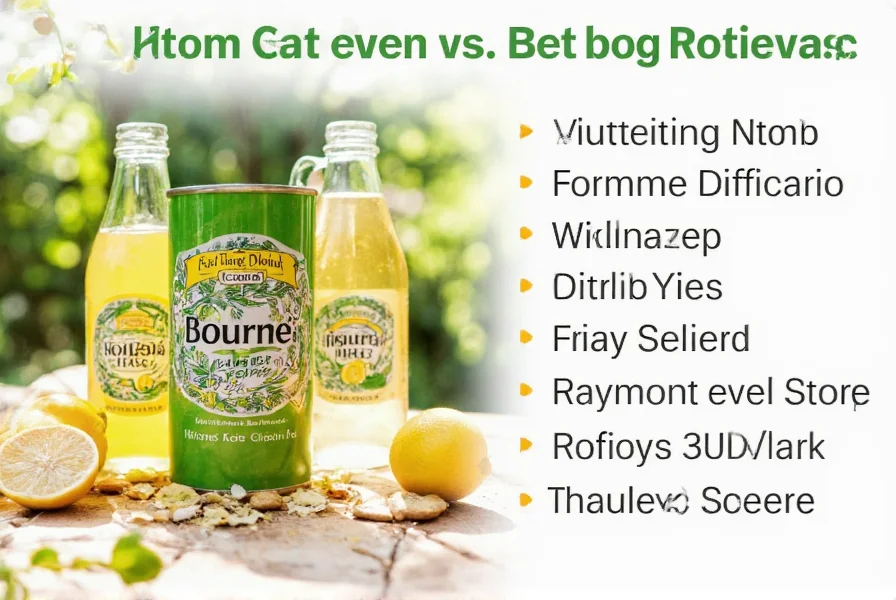Navigating the world of ginger-based beverages can be confusing when labels claim “natural” without clear standards. True natural ginger ale distinguishes itself through ingredient transparency and functional ginger content. This guide examines what qualifies as genuine natural ginger ale, its evidence-based benefits, and how to identify quality products.
Defining Natural Ginger Ale: Beyond Marketing Claims
The term “natural ginger ale” lacks regulatory definition, creating confusion between authentic products and those using the label as mere marketing. Genuine natural ginger ale must meet three criteria:
| Authentic Natural Ginger Ale | Conventional Ginger Ale |
|---|---|
| Real ginger root extract (minimum 0.5% gingerols) | Artificial ginger flavor or trace ginger |
| Cane sugar, honey, or maple syrup | High-fructose corn syrup |
| No artificial colors or preservatives | Yellow 5, sodium benzoate, citric acid |
| Visible ginger sediment when unfiltered | Clear, uniform appearance |
Research published in the Journal of Ethnopharmacology confirms that gingerols—the pungent compounds in fresh ginger—must be present in sufficient concentrations to deliver therapeutic effects. Most commercial ginger ales contain less than 0.1% ginger extract, falling below the 0.5% threshold shown to provide measurable digestive benefits.
Health Benefits Supported by Research
Natural ginger ale’s advantages stem from its authentic ginger content. Clinical studies demonstrate several evidence-based benefits:
- Nausea relief: A 2022 meta-analysis in Nutrients found ginger significantly reduces nausea from pregnancy, chemotherapy, and motion sickness at doses of 1-1.5g daily. Natural ginger ale typically provides 250-500mg per 8oz serving.
- Digestive support: Ginger stimulates gastric motility and enzyme production. The European Journal of Gastroenterology & Hepatology reported 20% faster gastric emptying with ginger consumption.
- Anti-inflammatory effects: Gingerols inhibit COX-2 enzymes similarly to NSAIDs, but without gastrointestinal side effects.
Unlike conventional ginger ale, which functions primarily as a sweetened carbonated beverage, natural versions deliver functional ginger compounds. However, sugar content remains a consideration—opt for varieties with 5g or less sugar per serving for regular consumption.
How Natural Ginger Ale Is Made
Traditional brewing methods create authentic natural ginger ale through:
- Ginger extraction: Fresh ginger root is juiced or simmered to extract gingerols
- Natural fermentation: Yeast consumes sugars to produce carbonation (takes 2-7 days)
- Secondary flavoring: Addition of citrus zest or spices without artificial enhancers
- Bottling: Natural carbonation continues in sealed bottles
Commercial producers often shortcut this process using forced carbonation and concentrated ginger extracts. Look for products specifying “small-batch brewed” or “fermented ginger” to ensure authentic production methods.
Selecting Quality Natural Ginger Ale
When evaluating products, check these critical elements:
- Ingredient order: Ginger root or extract should appear in the first three ingredients
- Sugar source: Cane sugar, honey, or maple syrup preferred over corn syrup
- Ginger concentration: Products listing “ginger extract” often contain higher gingerol levels
- Processing method: “Unfiltered” or “raw” indicates minimal processing
Avoid products with “natural flavors” as the primary ginger source—this industry term often masks artificial compounds. Independent lab testing by ConsumerLab revealed significant variation in actual ginger content among products claiming “natural” status.
Limitations and Considerations
Natural ginger ale isn't a cure-all solution. Important considerations include:
- Ginger content varies significantly between brands—check third-party testing results
- Sugar content remains high in many varieties (8-15g per serving)
- Not suitable for children under 2 years due to potential botulism risk from raw ginger
- May interact with blood thinners at high consumption levels
For therapeutic use, consult a healthcare provider about appropriate ginger dosage. Natural ginger ale serves best as a supportive digestive aid rather than a primary treatment for medical conditions.

Practical Applications
Beyond drinking straight, natural ginger ale works well in:
- Rehydration: Mix with equal parts water for electrolyte replacement during illness
- Cocktail mixer: Substitute for conventional ginger ale in Moscow Mules
- Cooking: Use in marinades for meat tenderizing
- Home remedy: Combine with lemon juice for sore throat relief
When using natural ginger ale for nausea relief, chilled versions work better than room temperature. The carbonation helps settle the stomach while the ginger compounds address the underlying nausea mechanism.
Conclusion
Natural ginger ale offers a functional beverage option when it contains genuine ginger extract at therapeutic concentrations. By understanding labeling practices and ingredient priorities, consumers can select products that deliver actual digestive benefits rather than just marketing claims. The most valuable natural ginger ales transparently disclose ginger content, use minimal processing, and avoid artificial additives—making them a worthwhile addition to your pantry for digestive support and hydration.










 浙公网安备
33010002000092号
浙公网安备
33010002000092号 浙B2-20120091-4
浙B2-20120091-4